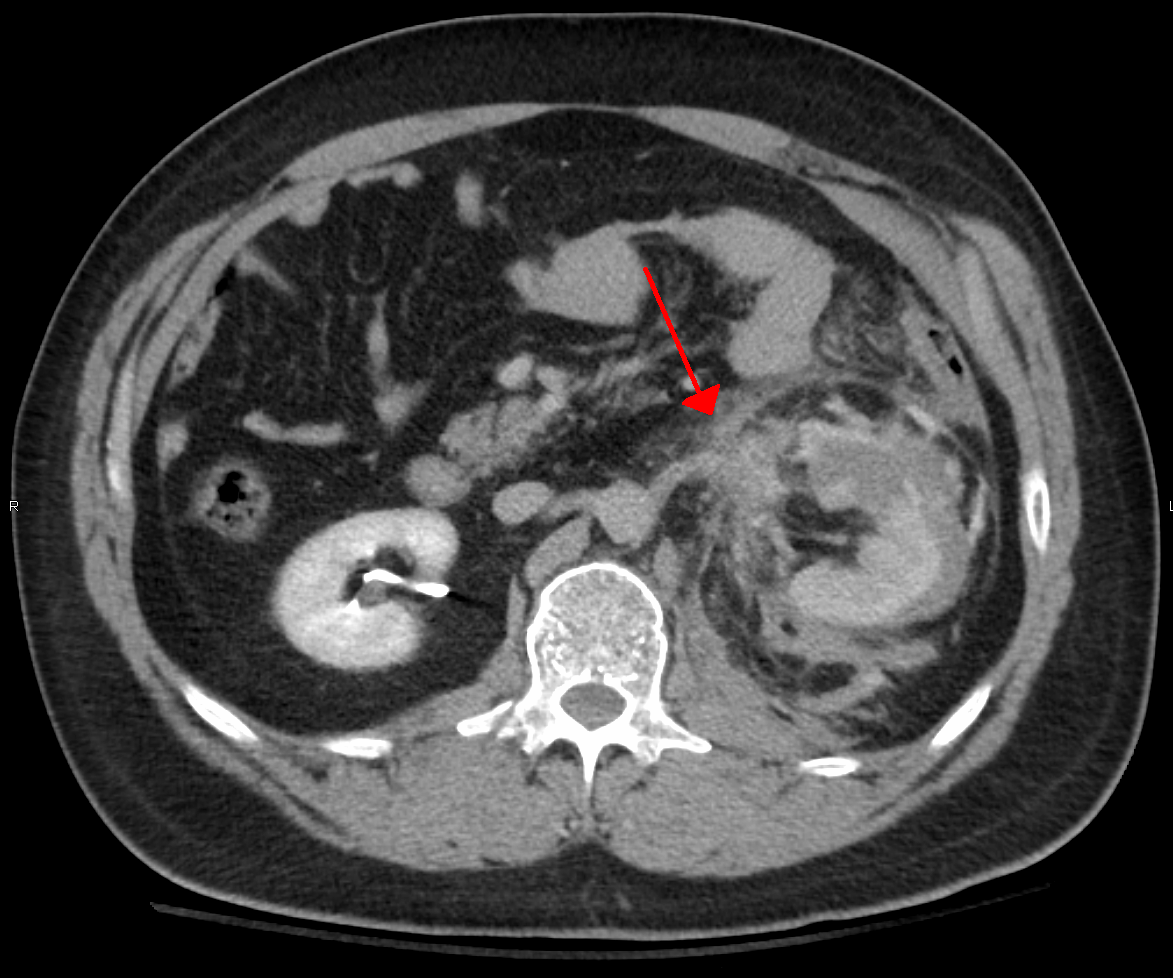Blunt kidney trauma on:
[Wikipedia]
[Google]
[Amazon]
 The
The
 The
The kidney
The kidneys are two reddish-brown bean-shaped organs found in vertebrates. They are located on the left and right in the retroperitoneal space, and in adult humans are about in length. They receive blood from the paired renal arteries; blo ...
is injured in approximately 10 percent of all significant blunt abdominal trauma. Of those, 13 percent are sports-related when the kidney, followed by testicle, is most frequently involved. However, the most frequent cause by far is traffic collisions, followed by falls. The consequences are usually less severe than injuries involving other internal organs.
Sports related injury
Blunt injuries to the kidney from helmets, shoulder pads, and knees are described in football, and in soccer, martial arts, and all-terrain vehicle crashes. A literature review of peer-reviewed articles in May 2009 demonstrated thaturogenital
The genitourinary system, or urogenital system, are the organs of the reproductive system and the urinary system. These are grouped together because of their proximity to each other, their common embryological origin and the use of common pathwa ...
injuries are uncommon in team and individual sports, and that most of them are low-grade injuries, cycling being the most commonly associated, followed by winter sports, horse riding and contact/collision sports. A special situation has existed in the athletic participant with a single kidney.
Formerly, the American Academy of Pediatrics Committee on Sports Medicine and Fitness advised against such children and adolescents from participating in contact sports. Children's kidney's are prone to injury from blunt force trauma due to their size and location in a child's body. However, a study of 45,000 children with kidney injuries demonstrated no kidney loss in any contact sport. Sledding, skiing and rollerblading did, however, result in such loss. Further, data from the National Athletic Trainers' Association High School Injury Surveillance Study, an observational cohort study during the 1995–1997 academic years, have been used to compare incidence rates for sport-specific injuries to specific organs. There were over 4.4 million athlete-exposures, defined as 1 athlete participating in 1 game or practice. Student athletes incurred kidney injuries most often playing football (12 injuries) or girls' soccer (2 injuries).
The American Academy of Pediatrics currently recommends a "qualified yes" for participation by athletes with single kidneys in contact/collision sports although some physicians remain reluctant to acquiesce.
Diagnosis
In blunt injury, imaging is indicated if there is grosshematuria
Hematuria or haematuria is defined as the presence of blood or red blood cells in the urine. “Gross hematuria” occurs when urine appears red, brown, or tea-colored due to the presence of blood. Hematuria may also be subtle and only detectable w ...
, or if the patient exhibits shock
Shock may refer to:
Common uses Collective noun
*Shock, a historic commercial term for a group of 60, see English numerals#Special names
* Stook, or shock of grain, stacked sheaves
Healthcare
* Shock (circulatory), circulatory medical emergen ...
together with either gross or microscopic hematuria.
Investigation
The imaging modality of choice is contrast-enhanced, computedtomography
Tomography is imaging by sections or sectioning that uses any kind of penetrating wave. The method is used in radiology, archaeology, biology, atmospheric science, geophysics, oceanography, plasma physics, materials science, astrophysics, ...
(CT) which is readily available in most emergency departments of moderate or above size. Scan times have become shorter with each generation of scanners and current scans are quick and accurately demonstrate renal injuries together with associated injuries to other abdominal or retroperitoneal organs.
Treatment
Unlike ultrasound examination (FAST), CT provides anatomic and functional information that allows for accurate grading of the injury which is partly responsible for a growing trend toward conservative management (intravenous fluids, close monitoring, watchful waiting) of renal trauma. Conservative management does not apply in situations where extensive urinary extravasation or devitalized areas of renal parenchyma are found and especially if associated with injuries to other abdominal organs; these cases are complication-prone and much more likely to require surgery. That being said, a retrospective study suggests that primary conservative treatment of blunt kidney rupture seems to lead to less surgery, especially less open surgery, and less blood and renal parenchyma loss, compared to a strategy of initial surgery.See also
* Abdominal traumaReferences
{{Trauma Injuries of abdomen, lower back, lumbar spine and pelvis Medical emergencies Trauma types